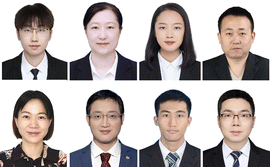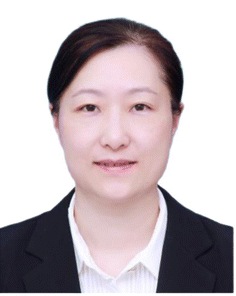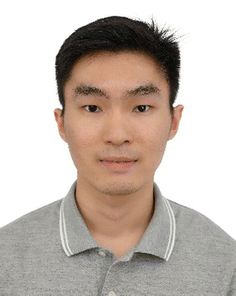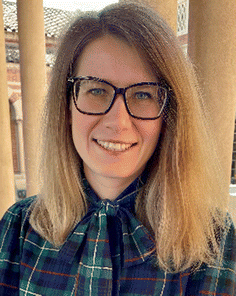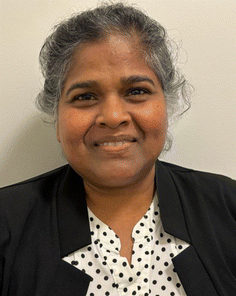Nanoscale Horizons 2024 Outstanding Paper Award
Abstract
Recognizing some of the outstanding work published in Nanoscale Horizons in 2024, as well as the authors behind those articles. Discover our winners and their outstanding articles below.
It gives us great pleasure to introduce the winners of our 2024 Outstanding Paper Award in this Editorial.
Our selection process continues to focus on the science presented and the potential future impact of the work. You can find more details of the process in the Editorial from our inaugural awards.
With the high calibre of the articles we published throughout 2024, it was a difficult choice for our Editorial and Advisory Board to select winners from the shortlist, which was reflected in our scoring with many articles in contention for recognition across a range of research themes and a very close final outcome. Nonetheless, we are delighted to introduce our Outstanding Article winner and runner up, as well as our Outstanding Review of 2024.
Please join us in congratulating our winners; we hope you enjoy reading their outstanding articles as much as we did.
Nanoscale Horizons 2024 Outstanding Article winner
An ionically cross-linked composite hydrogel electrolyte based on natural biomacromolecules for sustainable zinc-ion batteries
Haoyang Ge, Liping Qin, Bingyao Zhang, Long Jiang, Yan Tang, Bingan Lu, Siyu Tian and Jiang ZhouIn this outstanding article ( https://doi.org/10.1039/D4NH00243A), the authors developed a composite hydrogel electrolyte to enable high-performance zinc-ion batteries. Stable and ion-conducting hydrogel frameworks could be achieved by crosslinking sodium alginate and iota-carrageenan biomacromolecules using Zn2+ ions. Meanwhile, the incorporation of graphene oxide nanosheets within the hydrogel matrix effectively homogenizes Zn2+ ion distribution, enabling highly reversible zinc anodes in aqueous environments. These synergistic modifications significantly improve the cycling stability of batteries, highlighting the potential of biomacromolecules in developing biocompatible and safe zinc-ion batteries.
Nanoscale Horizons 2024 Outstanding Article runner-up
Insights into synaptic functionality and resistive switching in lead iodide flexible memristor devices
Muskan Jain, Mayur Jagdishbhai Patel, Lingli Liu, Jeny Gosai, Manish Khemnani, Himangshu Jyoti Gogoi, Mun Yin Chee, Antonio Guerrero, Wen Siang Lew and Ankur SolankiThis work (https://doi.org/10.1039/D3NH00505D) presents a flexible, low-voltage memristor device lead iodide, fabricated entirely via a solution-based process, targeting next-generation data storage and neuromorphic computing. The effect of precursor concentration on film thickness, surface morphology, and switching behavior is thoroughly investigated. The device demonstrates stable unipolar analog resistive switching, attributed to ion migration and filament dynamics, and operates reliably under ambient conditions (75% RH) without encapsulation. Remarkably, it retains performance even when bent to a 4 mm radius. Key synaptic functions – including paired-pulse facilitation (PPF), PPF index, potentiation and depression, and spike-timing-dependent plasticity (STDP) – are achieved under both flat and bent states. The device further achieves a MNIST pattern recognition accuracy of 95.04% (flat) and 95.06% (bent).
This publication represents a strong collaborative effort by a multidisciplinary team. Jain led the project execution, including experimental work, data collection, analysis, compilation, and manuscript preparation. Patel contributed to structural data acquisition, while Gosai focused on collecting the STDP data. Data simulations were supported by Liu and Chee under the expert guidance of Lew. Gogoi assisted with the KPFM measurements. Khemnani and Guerrero provided critical support in reviewing and proofreading the manuscript, with Guerrero also offering valuable insights into possible switching mechanisms. Solanki served as the principal investigator, conceptualizing the study, validating data, acquiring funding, and offering continuous supervision and guidance throughout the project. This work stands as a testament to the synergy and dedication of the entire team.
Nanoscale Horizons 2024 Outstanding Review winner
The evolution of immune profiling: will there be a role for nanoparticles?
Olga E. Eremina, Celine Vazquez, Kimberly N. Larson, Anthony Mouchawar, Augusta Fernando and Cristina ZavaletaIn this outstanding review ( https://doi.org/10.1039/d4nh00279b), the authors chart the evolution of immune profiling – from early bulk analyses to high-resolution spatial mapping enabled by advanced multiplexed imaging. They examine cutting-edge platforms and their transformative impact on understanding immune responses in both health and disease. Notably, the review highlights the emerging role of nanoparticles, which have the potential to offer enhanced sensitivity, specificity, and multiplexing capabilities – critical for immune profiling. By bridging nanotechnology and immunology, this work opens new directions for precision medicine, enabling more personalized diagnostics, therapeutic monitoring, and detailed characterization of the immune landscape in complex tissue environments.
This team is dedicated to advancing multiplexed imaging technologies to support the growing potential of personalized medicine. As evidence continues to mount on the immune system’s central role in health and disease, high-resolution immune profiling has become increasingly essential. Recognizing an exciting yet underexplored opportunity, the authors turned their attention to nanoparticle-based probes – tools with the potential to revolutionize how we study the spatial complexity of the immune landscape. As a team, the authors synthesized current knowledge in immune profiling, cutting-edge multiplexed imaging techniques, and the emerging applications of nanotechnology in this space. This review reflects their collective effort and expertise to highlight the importance of immune profiling, the progress made thus far, and how nanoparticles can help bridge existing gaps – ultimately advancing the field of precision immunology and improving patient outcomes.
Dr Heather Montgomery, Managing Editor
Professor Dr Katharina Landfester, Editorial Board Chair
Author Biographies
Nanoscale Horizons 2024 Outstanding Article winner
An ionically cross-linked composite hydrogel electrolyte based on natural biomacromolecules for sustainable zinc-ion batteries
Haoyang Ge received his Bachelor’s degree (2022) in materials science and engineering from Central South University. He is working as a Master’s student in Prof. Zhou’s group at the Department of Materials Science and Engineering, Central South University. His research interests include hydrogel and colloid electrolytes for aqueous zinc batteries.
Liping Qin received her Bachelor’s degree (2004), Master’s degree (2007), and PhD (2015) from Central South University. She joined Guangxi University of Science and Technology in 2007. Her research focuses on aqueous zinc batteries, lithium-ion batteries, etc. She has been awarded over 10 research grants from the National Natural Science Foundation project, Guangxi Science and Technology Development Project, and Guangxi Natural Science Foundation Project. She has published more than 50 academic papers, many of which have been recognized as hot or highly cited papers.
Bingyao Zhang obtained her Bachelor’s degree from Guizhou University in 2020. Now, she is working as a PhD student in Prof. Zhou’s group at the Department of Materials Science and Engineering, Central South University. Her research focuses on hydrogel electrolytes in aqueous zinc-ion batteries and their applications in wearable devices.
Long Jiang completed his postdoctoral fellowship at the National Institute for Materials Science (NIMS), Japan. He currently holds the position of Senior Engineer and serves as the Director of the New Energy Research Institute at the China National Petroleum Corporation Engineering Materials Research Institute (CNPC-TGRI). His research primarily focuses on perovskite photovoltaics and high-performance batteries. He has successfully completed over 10 national projects, including the National Oil and Gas Major Projects, National Key R&D Programs, National Natural Science Foundation of China, and CNPC corporate projects.
Yan Tang received her Bachelor’s degree (2002), and PhD degree (2011) from Central South University. She joined Central South University in 2006. Her research focuses on aqueous zinc batteries, lithium (sodium)-ion batteries, etc. She was ranked by Clarivate Web of Science’s “Highly Cited Researchers” in 2024.
Bingan Lu received his Bachelor’s degree (2008) and PhD (2012) from Lanzhou University (LZU), while serving as a visiting scholar at Stanford University from 2014 to 2015. Now, he is a professor and doctoral supervisor at Hunan University (HNU). He is the leader of a key project of the Regional Joint Fund of the National Natural Science Foundation of China and is recognized as a young backbone teacher of Hunan Province, is an awardee of the Outstanding Talent of Hunan Province, and a winner of the Annual Science and Technology Award. Prof. Lu’s research focuses on designing novel energy storage materials and devices with low cost and a long life, including Li/K/Al ion batteries, publishing over 200 papers in many prestigious journals.
Siyu Tian received his Bachelor’s (2014) and Master’s (2017) degrees from Huazhong University of Science and Technology and his PhD (2023) from the University of Texas at Dallas. In 2024, he joined Professor Jiang Zhou’s research team at Central South University, where his research focuses on aqueous zinc batteries.
Jiang Zhou received his Bachelor’s degree (2011), and PhD degree (2015) from Central South University. He carried out scientific research at Nanyang Technological University in Singapore (2014–2015) and Massachusetts Institute of Technology in the United States (2016–2017). He joined Central South University as a Professor at the end of 2017. His research focuses on aqueous zinc batteries, lithium (sodium)-ion batteries, etc. He is an elected fellow of the Royal Society of Chemistry and has been ranked by Clarivate Web of Science’s “Highly Cited Researchers” since 2021. He serves as an Associate Editor of Nano-Micro Letters and is a member of the Editorial Advisory Board of Chemical Society Reviews.
Nanoscale Horizons 2023 Outstanding Article runner-up
Insights into synaptic functionality and resistive switching in lead iodide flexible memristor devices
Muskan Jain is currently pursuing her PhD in applied physics at the School of Energy Technology, Pandit Deendayal Energy University (PDEU), under the supervision of Dr Ankur Solanki. She holds a Master’s degree in applied physics from CHARUSAT University. Her research interests cover materials science, flexible electronics, device physics, memristor devices, neuromorphic applications, and data storage. With expertise in materials science, she is particularly focused on understanding the fundamental properties of materials for next-generation energy technologies.
Mayur Jagdishbhai Patel earned his Bachelor of Engineering in chemical engineering from Vishwakarma Government Engineering College in 2019 and is currently pursuing his PhD in the Department of Chemistry at the Indian Institute of Technology (IIT) Guwahati, India. Since 2020, he has been conducting research in the Organic Electronics Laboratory under the guidance of Prof. Parameswar K. Iyer. His work focuses on utilizing organic molecules and polymers to enhance the development of multidimensional perovskite photovoltaic devices, contributing to advancements in next-generation solar energy technologies.
Lingli Liu is a Research Fellow at the School of Physical and Mathematical Sciences, Nanyang Technological University. She received her PhD in physics from Nanyang Technological University. Her research focuses on multi-terminal memristors and their applications in neuromorphic computing.
Jeny Gosai is a PhD researcher at Pandit Deendayal Energy University, Gujarat, guided by Dr Nitin Chaudhari and Dr Ankur Solanki. Her research focuses on low-dimensional MXene nanomaterials for flexible and biodegradable memristive devices, with applications in tactile sensors and EMG systems. She holds a Master’s in industrial chemistry (2022) from PDEU and a Bachelor’s in chemistry (2020) from Kadi Sarva Vishwavidyalaya. Gosai has received the ACS Best Poster Award (2023) and the SHODH Fellowship, and co-holds a patent on hybrid Dion–Jacobson perovskite-based memristors, contributing to sustainable and next-generation electronics.
Manish Khemnani is a PhD researcher at Pandit Deendayal Energy University. He completed his BSc in 2016 and MSc in 2018 from Gujarat University, Gujarat, India. His current research interests include the interface mechanisms of perovskite-based memristor devices using impedance spectroscopy, memristor, neuromorphic characterization, solar cells, and machine learning.
Himangshu Jyoti Gogoi completed his BTech in electronics and communication engineering at the National Institute of Technology (NIT) Silchar in 2013, followed by an MTech in microelectronics and VLSI Design from the same institute in 2016. He completed his PhD at the Indian Institute of Technology (IIT) Guwahati in the field of fabrication and modelling of memristive devices. Post PhD, he worked in the Centre for Nanotechnology IIT Guwahati, in a research project funded by the Ministry of Electronics and Information Technology (MeitY), Government of India, for over 2 years. He has published 10 research papers in SCI/Scopus-indexed journals and several international conference papers. Currently, he is working as an assistant professor at Assam Skill University, Department of Electronics.
Mun Yin Chee is a Senior Engineer at UMC, Singapore. He received his PhD in physics from Nanyang Technological University. His research focuses on memristive devices and their integration for neuromorphic and in-memory computing applications.
Antonio Guerrero is an associate professor in applied physics at the University Jaume I. He obtained his PhD in organometallic chemistry (2006, University of East Anglia, UK) with industrial support from Bayer, focusing on catalyst design for plastic production. He then spent four years at Cambridge Display Technology developing advanced semiconducting materials for OLEDs. Since 2010, at the University Jaume I, his research has primarily focused on three areas: (1) photovoltaic applications, (2) electronic memory devices, and (3) advanced solutions for energy vectors and the circular economy.
Wen Siang Lew is a professor of physics at the School of Physical and Mathematical Sciences, Nanyang Technological University. He is also the Head of Physics and Applied Physics Division. He graduated from the University of Cambridge, UK with a PhD in physics. His research interests are in non-volatile memory materials and devices, magnetism and spin electronics devices.
Ankur Solanki is an assistant professor in the Department of Physics at Pandit Deendayal Energy University (PDEU), Gandhinagar. He obtained his PhD from Nanyang Technological University, Singapore, MTech from IIT Kanpur, and MSc from CCS University, Meerut. He previously worked as a Research Engineer at Samtel Color Ltd, developing a PMOLED display prototype. His research focuses on advanced electronic materials and devices for emerging technologies, with expertise in hybrid perovskites, flexible electronics, memristors, neuromorphic devices, photovoltaics, LEDs, and nanomaterials. Solanki’s work aims to drive innovation in energy-efficient computing and next-generation optoelectronic applications.
Nanoscale Horizons 2024 Outstanding Review winner
The evolution of immune profiling: will there be a role for nanoparticles?
Olga E. Eremina is an Agilent postdoctoral fellow at the University of Southern California (USC), U.S. After earning an MS with Honors in chemistry, she completed her PhD in analytical chemistry at Moscow State University, where she focused on developing surface-enhanced Raman spectroscopy (SERS) and fluorescence-based sensors. In 2024, Eremina was recognized as a CAS Future Leader by the American Chemical Society. Her current research centers on nanoparticle-based contrast agents aimed at achieving high targeting specificity and quantitative multiplexing capabilities for molecular imaging. She is particularly dedicated to advancing nanomedicine for precision medicine and improving patient outcomes.
Celine Vazquez graduated with her Bachelors in Science from the University of Southern California. She worked as an undergraduate student researcher with the Zavaleta Laboratory throughout her entire collegiate career. Currently, Vazquez works as a Scientist II in Genentech’s Developmental Sciences and Translational Medicine divisions.
Kimberly N. Larson received her BS in biomedical engineering from the University of Southern California in 2021. She then served as a research and development engineer in the medical device industry. Currently, she is pursuing her medical degree at the University of Arizona College of Medicine Phoenix.
Anthony Mouchawar received his BS in biomedical engineering from the University of Southern California in 2024. As an undergraduate, he performed research under Dr Cristina Zavaleta, primarily focusing on gold nanoparticle imaging using multiphoton microscopy. He is currently working towards his MS in molecular microbiology and immunology at USC while researching under Dr Peter Wang. His current research involves CAR-T cell therapy, utilizing heat inducibility and cell signal manipulation to improve CAR-T cell infiltration into target tumors.
Augusta Fernando received her basic degree in microbiology and applied medical sciences from the University of Mumbai and PhD in biochemistry using molecular and immunological tools to study the transmission of tropical diseases. She further pursued a thesis in cancer biology towards her MPhil from the University of Portsmouth, England (2006). She has over 30 years experience in the field of biomedical research with a primary focus on cancer therapeutics and diagnostics. Her current research interests include drug screening for 3D research models and exploring diagnostic tools in medicine.
Cristina Zavaleta received her Bachelor’s degree in nuclear medicine at the University of Incarnate Word. Excited about the prospect to develop new nuclear-based contrast agents, she attended graduate school at the University of Texas Health Science Center in San Antonio. After completing her PhD, she began a postdoctoral fellowship at Stanford University, where she helped pioneer a new molecular imaging strategy that utilizes Raman nanoparticles for cancer detection. She is currently an associate professor in biomedical engineering at the University of Southern California and focuses on providing physicians with new nano-based molecular imaging tools to improve cancer detection and treatment.
| This journal is © The Royal Society of Chemistry 2025 |

